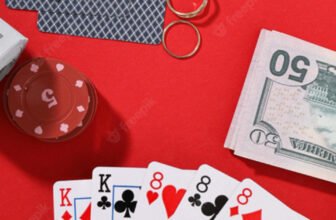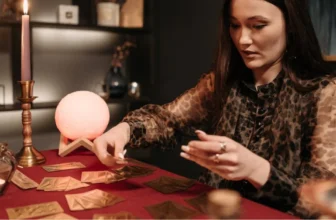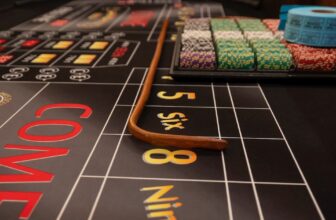
Are you a poker enthusiast looking to take your game to the next level?
Imagine having your own professional poker table, where you can host poker nights with friends and family, and create an authentic casino experience right at home.
Building your own poker table may sound like a daunting task, but with the right guidance and a few essential tools, it can be a rewarding and enjoyable project.
In this article, we’ll walk you through the step-by-step process of building your own professional poker table.
Benefits of Building Your Own Poker Table
Building your own poker table has several advantages over buying one.
First and foremost, building your own table allows you to customize it to your specific needs and preferences. You can choose the size, shape, and design that best suits your space and style.
Additionally, building your own table can be a cost-effective option, as it eliminates the markup associated with pre-made tables.
Lastly, building your own poker table can be a fulfilling and rewarding DIY project, allowing you to showcase your craftsmanship and create a unique piece that reflects your passion for the game.
Necessary Tools and Materials
Before you begin building your poker table, it’s important to gather all the necessary tools and materials. Here’s a list of the items you will need:
- Plywood or MDF board for the table base
- Foam padding for the playing surface
- Vinyl or felt fabric for the playing surface
- Rail foam for the table rail
- Vinyl or leather fabric for the table rail
- Cup holders
- Jigsaw or circular saw
- Drill
- Staple gun
- Screwdriver
- Measuring tape
- Sandpaper
- Wood glue
- Screws
- Paint or stain (optional)
Make sure to gather all the necessary tools and materials before you begin the construction process. This will ensure a smooth and efficient build.
Step-by-Step Guide to Building the Poker Table Base
Building the base of your poker table is the first step in the construction process. Follow these steps to create a sturdy and stable foundation for your table:
- Measure the desired dimensions of your table, and mark them on the plywood or MDF board.
- Use a jigsaw or circular saw to cut out the table base according to your measurements.
- Sand the edges of the table base to ensure a smooth finish.
- Apply wood glue to the edges of the table base, and attach support beams underneath for added stability.
- Secure the support beams with screws, and allow the wood glue to dry completely.
- Sand the table base again to ensure a smooth and even surface.
By following these steps, you will have a solid and sturdy poker table base that will serve as the foundation for the rest of the construction process.
Creating the Playing Surface
The playing surface is an essential component of any poker table, as it provides a comfortable and smooth playing area. Follow these steps to create the perfect playing surface for your poker table:
- Place the foam padding on top of the table base, ensuring that it covers the entire surface.
- Cut the foam padding to the exact dimensions of the table base using a sharp knife or scissors.
- Attach the foam padding to the table base using a staple gun, securing it tightly and evenly.
- Once the foam padding is securely attached, place the vinyl or felt fabric on top.
- Smooth out any wrinkles or creases in the fabric, ensuring a flat and even playing surface.
- Attach the fabric to the table base using a staple gun, starting from the center and working your way outwards.
By following these steps, you will create a comfortable and professional-looking playing surface for your poker table.
Adding the Rail and Cup Holders
The rail and cup holders are important features that add functionality and style to your poker table. Follow these steps to add the rail and cup holders:
- Cut the rail foam to the desired dimensions, ensuring that it fits snugly around the edges of the table base.
- Attach the rail foam to the table base using a staple gun, securing it tightly and evenly.
- Once the rail foam is securely attached, place the vinyl or leather fabric on top.
- Smooth out any wrinkles or creases in the fabric, ensuring a clean and seamless look.
- Attach the fabric to the rail foam using a staple gun, starting from the center and working your way outwards.
- Measure the desired locations for the cup holders, and mark them on the rail.
- Use a drill to create holes for the cup holders, ensuring that they are the appropriate size and depth.
- Insert the cup holders into the holes, and secure them in place.
By following these steps, you will have a stylish and functional rail with cup holders for your poker table.
Finishing Touches and Customization Options
Once the basic construction of your poker table is complete, you can add finishing touches and customize it to your liking. Here are some ideas to consider:
- Paint or stain the table base and rail to match your personal style.
- Add decorative elements such as decals or logos to personalize your poker table.
- Install LED lights underneath the rail for a more dramatic and immersive gaming experience.
- Consider adding a chip tray or card shuffler for added convenience and authenticity.
These finishing touches and customization options will make your poker table truly unique and personalized.
Maintenance and Care for Your Poker Table
To ensure the longevity and durability of your poker table, it’s important to take proper care of it. Here are some maintenance tips to keep in mind:
- Clean the playing surface regularly using a soft cloth or brush to remove any debris or stains.
- Avoid placing heavy objects on the table, as this can cause damage to the playing surface.
- Store your poker table in a dry and climate-controlled environment to prevent warping or cracking.
- If necessary, repair any damages or scratches on the table base or rail using wood filler or touch-up paint.
By following these maintenance tips, you can enjoy your homemade professional poker table for years to come.
Cost Comparison: Building vs. Buying a Poker Table
Building your own poker table can be a cost-effective option compared to buying a pre-made table. The cost of building a poker table will vary depending on the materials and customization options you choose.
However, in general, building your own table can save you money, especially if you already have some of the necessary tools on hand.
Additionally, building your own table allows you to create a custom piece that meets your specific needs, which may not be possible with store-bought options.
Enjoying Your Homemade Professional Poker Table
Building your own professional poker table is an exciting and rewarding DIY project that allows you to showcase your craftsmanship and create a unique gaming experience.
By following the step-by-step guide outlined in this article, you can build a sturdy and stylish poker table that will impress your fellow players.
From selecting the right materials and tools to adding finishing touches and customizations, this guide provides all the information you need to create your very own professional poker table.
So, get ready to showcase your poker skills and create unforgettable game nights with your homemade masterpiece!







